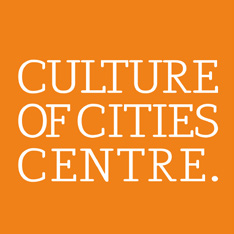MEMBER FILMS
Berlin Topographies
“Where are those citizens of Berlin who hang in the air of Berlin?…They are not really here in any physical form, and yet they have a stake in the city.”
— Daniel Libeskind, Berlin Topographies
The recent history of communist Berlin has been replaced with an intensification of commemorative spaces that seek to mark the absence and loss produced by the Holocaust. In the past twelve years alone about 600 new placards, monuments and memorials now commemorate a past that Berlin had left unacknowledged in the years after its decisive role in the Second World War. As a modern changing city, Berlin is absorbed in its present as a stepping stone for the future while at the same time engaged in an extensive reconstruction of its past. Why should a forward-looking city be engaged so frenetically in a backward glance? What do these permanent memorials mean in a city
Elke Grenzer &
Peter Shevlin
2000
26 minutes
that once again has the stature to represent all of Germany? This film explores the role that memory sites such as the Topography of Terror and Eisenman’s controversial “Memorial for the Murdered Jews of Europe” play in the changing landscape of Berlin. Architect Daniel Libeskind, Rabbi Rothschild, Thomas Lutz, Tom Freudenhaim, Iris Noah Weiss and Meshulash argue about the necessity of remembrance and why even forgetting is vital to the “new” Berlin.
For more information about this film, please contact the director at elke@elkegrenzer.com
1930-1942 Jewish Memory of the Marolles-Midi Quarter
The film “1930-1942 Jewish Memory of the Marolles-Midi Quarter” is based on interviews with six surviving members of the Jewish community in the Marolles neighbourhood of Brussels during the decades before the quarter’s Jewish inhabitants were deported to Auschwitz. The testimonial footage comes from the archives of the Auschwitz Foundation and from the National Archives of Belgium. Rather then focusing on the Holocaust, the film has been created as a testament to a time and place prior to Deportation.
he film celebrates the life and culture of erstwhile members of the Jewish community in Brussels who tell their stories of growing up in the Marolles district. At once a collective portrait of a community and a glimpse into the memory of Jewish life in pre-war Brussels, it is also a reflection on the use of the archives and its relevance for the present. Direction: Marta Marín-Dòmine Length: 42 minutes. Production: Auschwitz Foundation, Brussels
Disaster Tours: New Orleans After Katrina
As we cross over the Claiborne Avenue bridge from the Upper Ninth Ward on Gray Line International’s “Hurricane Katrina – America’s Greatest Catastrophe” tour, local artist Brad Dupuy informs us in his rich voice that we “are about to enter what is known famously as the Lower Ninth Ward.” What makes the Lower Ninth Ward notable, at least for Gray Line and the rest of the world, is that this is where Hurricane Katrina hit the hardest.
According to Dupuy, the Lower Ninth “saw a tremendous amount of media attention largely because this is where you would have seen our highest numbers of fatalities, where you would have seen the high- est numbers of people in need of being rescued from their properties.” It is also the place where the most people lost their homes when the levees broke in August 2005.



